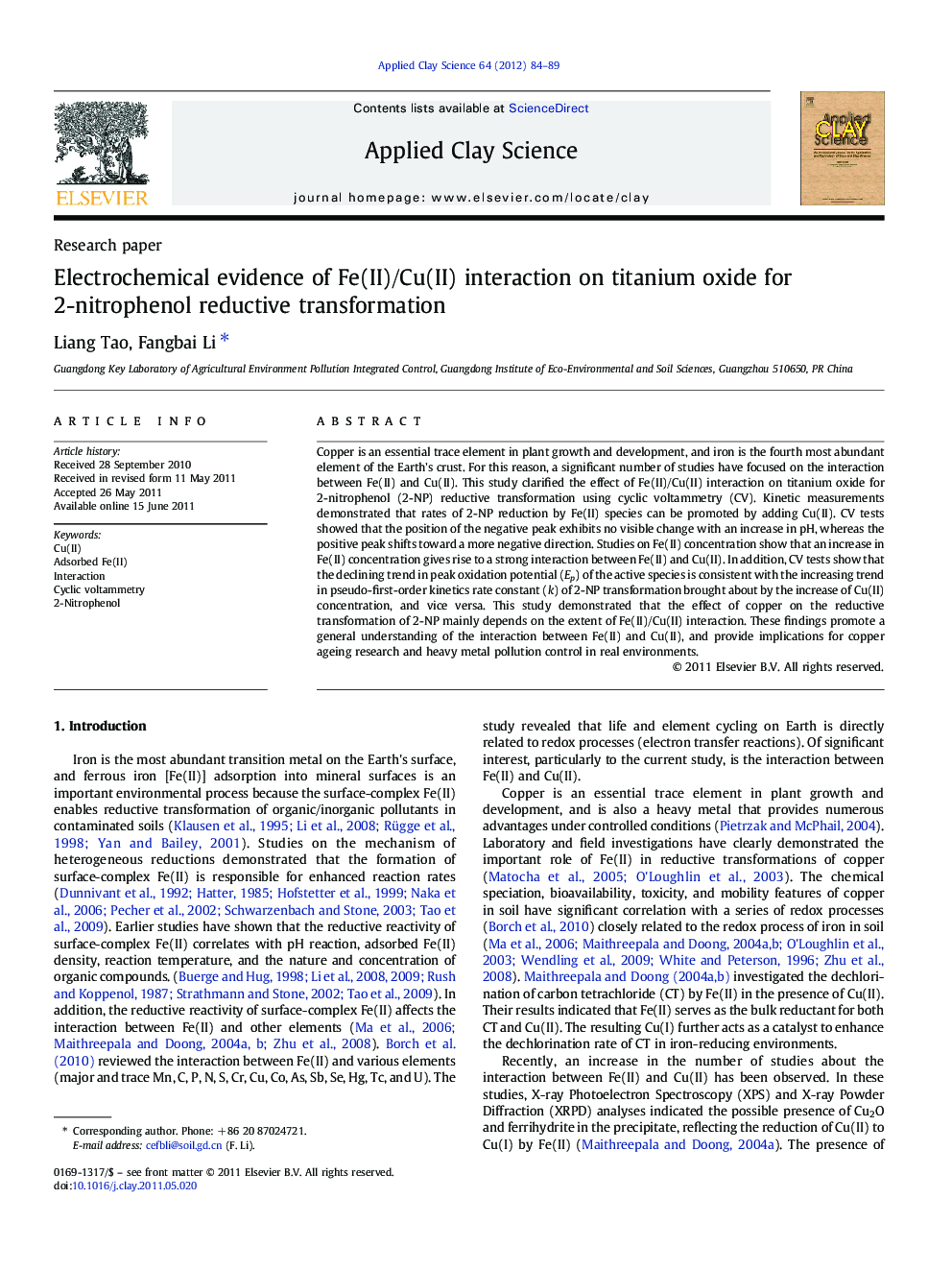| کد مقاله | کد نشریه | سال انتشار | مقاله انگلیسی | نسخه تمام متن |
|---|---|---|---|---|
| 1695259 | 1519104 | 2012 | 6 صفحه PDF | دانلود رایگان |

Copper is an essential trace element in plant growth and development, and iron is the fourth most abundant element of the Earth's crust. For this reason, a significant number of studies have focused on the interaction between Fe(II) and Cu(II). This study clarified the effect of Fe(II)/Cu(II) interaction on titanium oxide for 2-nitrophenol (2-NP) reductive transformation using cyclic voltammetry (CV). Kinetic measurements demonstrated that rates of 2-NP reduction by Fe(II) species can be promoted by adding Cu(II). CV tests showed that the position of the negative peak exhibits no visible change with an increase in pH, whereas the positive peak shifts toward a more negative direction. Studies on Fe(II) concentration show that an increase in Fe(II) concentration gives rise to a strong interaction between Fe(II) and Cu(II). In addition, CV tests show that the declining trend in peak oxidation potential (Ep) of the active species is consistent with the increasing trend in pseudo-first-order kinetics rate constant (k) of 2-NP transformation brought about by the increase of Cu(II) concentration, and vice versa. This study demonstrated that the effect of copper on the reductive transformation of 2-NP mainly depends on the extent of Fe(II)/Cu(II) interaction. These findings promote a general understanding of the interaction between Fe(II) and Cu(II), and provide implications for copper ageing research and heavy metal pollution control in real environments.
Research highlights
► Effect of Fe(II)/Cu(II) interaction were investigated using cyclic voltammetry.
► Rates of 2-NP reduction by Fe(II) species can be promoted by adding Cu(II).
► Increase in Fe(II) concentration gives rise to severe Fe(II)/Cu(II) interaction.
► Correlations between k values and Cu(II) concentration were normal distribution.
► EP's declining trend is consistent with k values’ increasing trend, and vice versa.
Journal: Applied Clay Science - Volume 64, August 2012, Pages 84–89